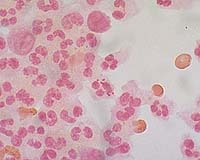| . |  |
. |
Buenos Aires (AFP) June 16, 2009 The swine flu deaths of two people in Argentina and a mutation of the H1N1 virus detected in Brazil have added to fears that South America is entering a harsh winter beset by the flu pandemic. While big pharmaceutical firms are ramping up efforts to mass-produce a vaccine for H1N1, they are still months away from having enough stocks -- too late for the Southern Hemisphere's winter flu season. South America has already recorded five deaths from the disease: two in Chile, one in Colombia last week and, most recently, those of a three-month-old girl and a 28-year-old man with leukemia in Argentina's capital Buenos Aires. The number of infected cases is outstripping figures put out regularly by the World Health Organization. According to the latest statistics Tuesday Chile's confirmed number of patients with H1N1 flu soared by several hundred from 2,355 to 3,125. Other national health authorities also registered increases with Argentina reporting 733, Peru with 113, Brazil 69, Ecuador 84, Venezuela 44, Uruguay 36, Paraguay 25 and Suriname 13. Those figures are far overshadowed by the data from North America, the apparent source of the pandemic. Mexican authorities say they have had 109 deaths and 6,294 infected cases. The United States on Tuesday added a nine-year-old boy to its death toll, bringing it to 47, alongside 17,855 infected cases. Canada has six deaths and 3,515 infections. Central America and the Caribbean have also been hit, registering nearly 800 infections and three deaths (one each in Costa Rica, the Dominican Republic and Guatemala). Although the A(H1N1) virus has been classed as relatively mild since first being detected in April, its unusually strong effect on the young, on those with other underlying health problems, and on the poor have made it a redoubtable challenge. Some major drug companies have started producing a vaccine for pre-clinical testing, but one of them, Switzerland's Novartis, told the Financial Times it did not intend to give it away to poor countries. US rival Baxter said Tuesday it should have its H1N1 vaccine commercially available in July. But there were underlying fears that the virus currently spreading around the world through human-to-human contact might mutate further, possibly into a more deadly form, as happened with the 1918 Spanish flu which killed tens of millions. Those fears heightened a little Tuesday, when a Brazil's Adolfo Lutz Bacteriological Institute said its researchers had identified and isolated a new strain of the A(H1N1) virus in a Sao Paulo patient. It was not yet known whether that variant, called A/Sao Paulo/1454/H1N1, was more aggressive than the more common type. The institute said in a statement the mutation comprised of alterations in the Hemagglutinin protein which allows the virus to infect new hosts. Share This Article With Planet Earth
Related Links Epidemics on Earth - Bird Flu, HIV/AIDS, Ebola
 Burkina's meningitis epidemic over, but measles spreading
Burkina's meningitis epidemic over, but measles spreadingOuagadougou (AFP) June 16, 2009 A meningitis epidemic that killed more than 500 people since January in Burkina Faso is over, a health ministry official said Tuesday, but the government was rushing to contain a measles outbreak. "I can tell you that the meningitis epidemic is over," said the director of the ministerial department fighting the cerebro-spinal disease in the west African country, Dr Sylvestre Kiendrebeogo. ... read more |
|
| The content herein, unless otherwise known to be public domain, are Copyright 1995-2009 - SpaceDaily. AFP and UPI Wire Stories are copyright Agence France-Presse and United Press International. ESA Portal Reports are copyright European Space Agency. All NASA sourced material is public domain. Additional copyrights may apply in whole or part to other bona fide parties. Advertising does not imply endorsement,agreement or approval of any opinions, statements or information provided by SpaceDaily on any Web page published or hosted by SpaceDaily. Privacy Statement |